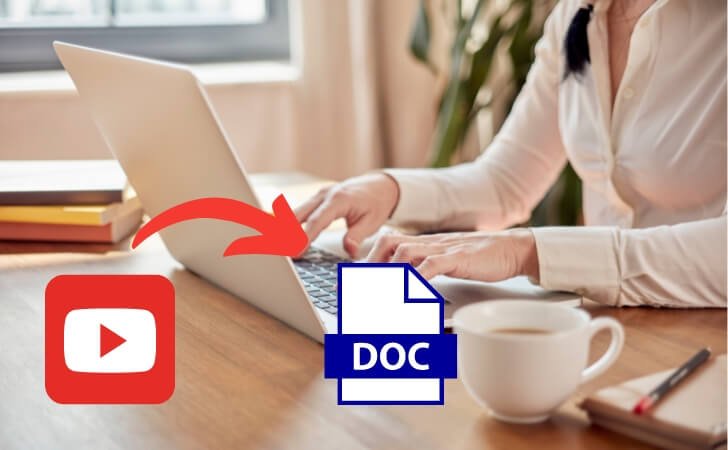AFFILIATE DISCLOSURE
This post may contain affiliate links. An affiliate means Escribr may earn referral fees if you make a purchase through our link without any extra cost to you. It helps to keep this blog afloat. Thanks for your support!
Did you know that by visiting this blog, you are doing good in the world? READ THIS.
Imagine this: you’ve got a mountain of audio or video recordings, and you need them converted into clear, readable text.
Transcription services can be your hero, but with a quick online search, you’re bombarded with options.
How do you pick the right one?
This guide will be your compass, helping you navigate the world of transcription services.
We’ll answer the burning questions you might have:
- What exactly do I need from a transcription service?
- How do I wade through all these choices and find the perfect fit?
- What questions should I ask to make sure they’re the right match for my project?
Don’t let the sea of transcription services drown you out.
Keep reading, and we’ll help you find the service that turns your recordings into golden text.
These are the things you should consider:
1. Transcription Style
A quick search on Google or social media for “transcription service” will show you tons of options.
But before diving in, explore what makes a perfect fit for your needs.
Understand transcription styles.
It all boils down to how much detail you want captured.
Full Story, No Edits (True Verbatim) – Every “um,” “ah,” and filler word gets transcribed, capturing the exact flow of conversation. Great for legal proceedings or research where every word matters.
Clean and Clear (Intelligent Verbatim) – Unnecessary stumbles and filler words are removed for a smooth, readable transcript. Perfect for interviews, lectures, or meetings where you want the key points without the conversational fluff.
The Essence (Standard Verbatim) – Similar to Intelligent Verbatim, but with some grammatical corrections for an even more polished feel. Ideal for presentations, podcasts, or videos where clarity and professionalism are important.
2. Technical Terminology
Ever recorded a meeting filled with industry jargon or a lecture packed with scientific terms?
If your transcript is for a general audience, you might not need every technical term transcribed perfectly.
But if it’s crucial for future reference or legal purposes, then here’s where the right transcription service comes in.
Look for a service that researches spellings of technical terms on the spot.
This means they’ll double-check the accuracy of those technical terms while transcribing, saving you the hassle of deciphering them later.
Now, if you don’t need the technical terms transcribed perfectly, ask for timestamps.
Timestamps look something like this: [h:mm:ss]
The service will mark specific points in the transcript where those terms appear.
This speeds up transcription and lets you easily find those sections later when proofreading the audio.
3. Speaker Accent
Ever struggled to understand someone with a thick accent?
Now imagine trying to transcribe a whole recording filled with them.
So if you’ve got an interview and your interviewee has a strong accent, the transcript might be a jumbled mess.
The truth is clear accents are easy for transcribers to understand.
But what about those thicker, more regional ones?
And what about those charming Scottish brogues or lively Indian dialects?
Here’s where choosing the right service becomes crucial.
Not all services are created equal.
Not every transcriber has a trained ear for these.
Some specialize in understanding specific accents, while others might struggle.
Here’s the key:
Look for experience.
The best services have transcribers familiar with a wide range of accents, from Australian twangs to Irish lilt.
By choosing a service that speaks “accent fluently,” you’ll ensure your transcript captures every word, clear as a bell.
NEED A HUMAN TRANSCRIBER?
Lazy isn’t your style, but busy definitely is.
Let us handle the tedious stuff, so you can get back to being awesome .
For inquiries, please shoot us an email: escribrteam@gmail.com
4. Turnaround Time (TAT)
So how long does it typically take?
Generally, for every hour of recording, expect 4-5 hours of transcription time.
This can increase if the recording throws in curveballs like strong accents, noisy backgrounds, a chorus of speakers, or technical jargon.
Editing and formatting also add to the process.
Most services offer a standard turnaround of 3-5 business days, depending on the recording length.
But what if you need it faster?
No problem. Just let the service know up front and discuss any “rush fee” options.
5. Audio Quality
Here’s the reality: bad audio quality takes longer to transcribe.
Background noise, low volume, echoes, or a cacophony of speakers can all slow down the process and lead to inaccuracies.
Imagine a transcript riddled with missing words or misinterpreted phrases – not exactly ideal.
So what can you do?
Test it out.
Before diving in, send a sample of your recording to the transcription service.
Ask them to whip up a sample transcript.
This lets you see if they can handle the audio quality and gives you a chance to assess their skills before committing to the whole project.
By choosing a service that can handle even the trickiest audio, you’ll ensure your final transcript is clear, concise, and captures every valuable word.
6. Number of Speakers
With multiple voices flying back and forth, who said what becomes a confusing jumble.
The key to clear transcripts with multiple speakers lies in knowing exactly who said what.
Ideally, your transcript should look like a conversation, with each speaker clearly identified.
A good transcript will label each speaker, like this:
- John: This is a great point.
- Sarah: I completely agree.
This might seem simple with a couple of speakers, but things get trickier with a crowd.
Imagine a room full of voices, each with their own speaking style and pace.
Skilled transcriptionists can differentiate between numerous voices, ensuring your transcript captures the conversation’s flow perfectly.
7. Time Codes and Timestamps
Time Stamps – These are like tiny flags planted at specific points in the transcript.
They’re usually formatted as [h:mm:ss] and come in handy when the transcriptionist encounters a tricky word.
This helps during editing, allowing you to pinpoint the exact spot in the recording for clarification.
Time Codes – Think of these as mile markers along your transcript journey.
They’re periodic codes inserted regularly (every minute, every 3 minutes, etc.) and are perfect for research.
Need to find where a specific conversation happened in the recording? Time codes will guide you straight there.
The key is to discuss your needs with the transcription service.
Do you need time stamps for occasional unclear bits, or are time codes crucial for your research project?
By letting them know your preferences, you’ll ensure your transcript is equipped with the perfect navigation tools.
NEED A HUMAN TRANSCRIBER?
Lazy isn’t your style, but busy definitely is.
Let us handle the tedious stuff, so you can get back to being awesome .
For inquiries, please shoot us an email: escribrteam@gmail.com
8. Formatting Style
A well-formatted transcript is more than just easy on the eyes; it’s a tool for better understanding and retention.
It allows you to quickly scan for key points, reference specific sections, and share it with others without confusion.
A transcript that’s properly formatted will save you time in the long run, making it easier to find what you need and get the most out of your valuable information.
You can even request additional touches like:
- Headings and subheadings – Guiding readers through the main points and subtopics.
- Special margins – Making the transcript easy on the eyes.
- Italicizing text – Emphasizing key points or quotes.
While these extras may involve a bit more time and cost, they’re worth it in the long run. A well-formatted transcript is:
- Easier to read and understand – Saving you time and effort.
- More professional – Making a great impression on your audience.
- More accessible – Allowing people with disabilities to enjoy the content.
9. Sending Files
How do you get audio files to a transcription service safely and securely?
Emailing large audio recordings is a no-go zone. Not only can it take forever, but security concerns might arise.
These are ways to send your files:
- Free Upload Space – Many transcription services offer a virtual vault specifically for uploading your recordings. This is the easiest option, allowing you to transfer your files directly within their platform.
- Online File Transfer Services – If the service doesn’t offer upload space, don’t worry. Websites like Hightail or SendThisFile let you upload your recordings and share them securely with the transcription service.
For added peace of mind, consider using secure online storage services like Dropbox or Google Drive to upload your recordings and then share the link with the transcription service.
This way, you have complete control over who can access your files.
10. Payment Options
When it comes to paying for transcription, there are more options than you might think! Depending on the service’s location, you might be able to use familiar methods like PayPal or explore options like Payoneer, Skrill or Wise.
Traditional methods like wire transfers, moneygrams, and even checks might also be on the table.
The key is to choose a method that’s convenient for both you and the service.
Don’t forget to check for any transaction fees associated with different payment methods.
These small charges can add up, so a little research goes a long way.
Remember, outsourcing transcription can save you a ton of time and money.
But without the right information, you might end up spending more than you bargained for.












